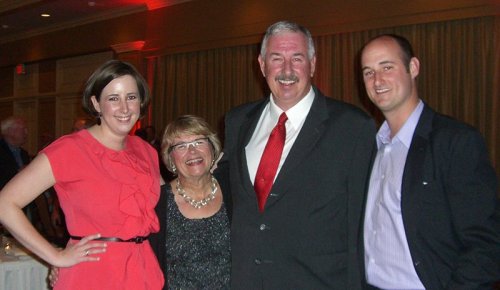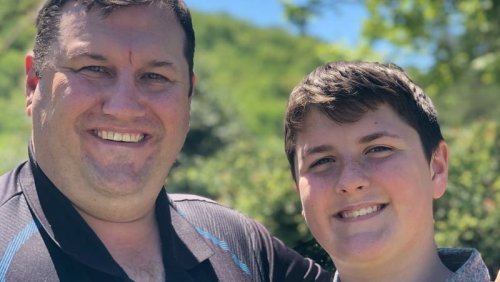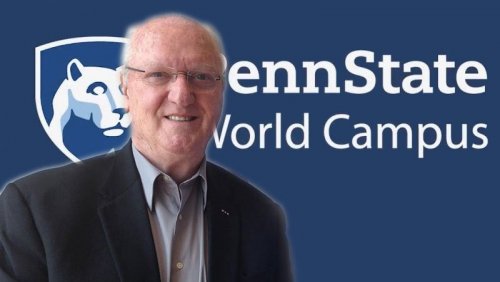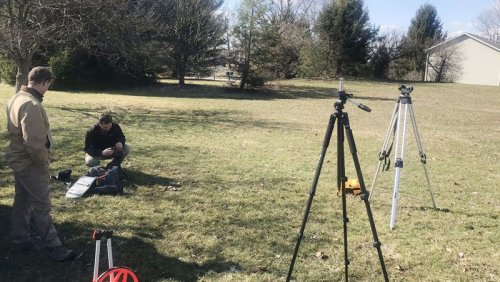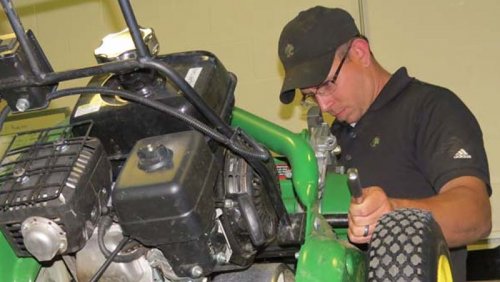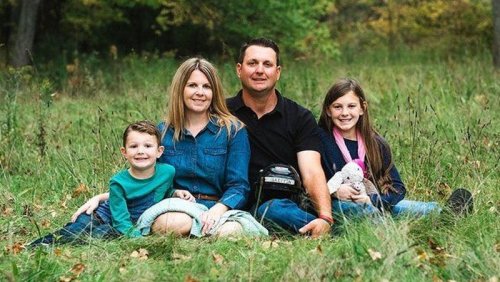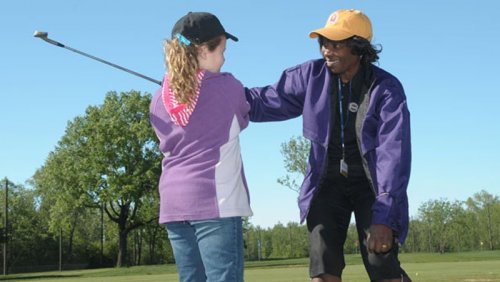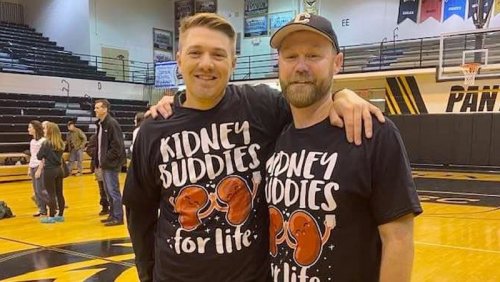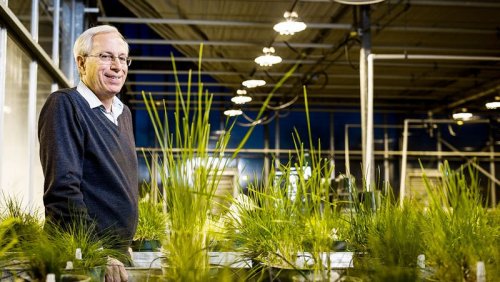
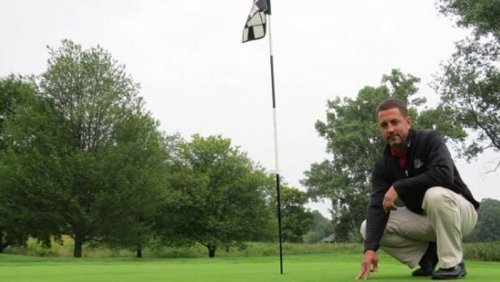
A year ago no one would have accused Glorioso of wearing his emotions on his sleeve. Friendly and polite, but quiet and reserved, Glorioso could be, at times, a tough nut to crack.
That was, in Glorioso's own terms, the "Old Tim." The one who has been superintendent at Toledo Country Club in Ohio for the past 20 years. The "New Tim", the one we ran into at TurfNet's Beer & Pretzels event in Orlando during the Golf Industry Show, is more outgoing and more emotional. As is often the case, the difference was a life-changing event that affected his health.
What initially was diagnosed by doctors as a brain tumor turned out to be life-threatening encephalitis that caused severe swelling in his brain.
"When the neurologist looked at my MRI he told me he thought I'd have two or three days to live," the New Tim said. "He told me 'Tim, you shouldn't be standing here today.' "
That was last June.
Thanks to his doctors at St. Luke Hospital in Toledo as well as the Cleveland Clinic, Glorioso is standing today - and still managing the turf at TCC. His rehabilitation is a story of support from his wife, family, club members and colleagues from around northwestern Ohio.
"This really is an unbelievable story," said Lynette Glorioso, Tim's wife and sweetheart from their days long ago at nearby Willard High School. "Don't get me wrong. It's been a very tough road.
"We were told it would be a very tough road, and he still has some trouble remembering some things."
One of the first red flags that something was wrong occurred one Monday morning last June when Glorioso got lost on the 15-minute drive from his home in Perrysburg to the golf course.
"It's the exact same drive I've been making every day for the last 18 years," he said. 'I missed the turn and went past the golf course."
He ended up in a construction zone where he ran over a cone before bringing his car to a stop. A construction worker at the site rapped on the driver's door window and asked him if he had been drinking.
"I'm not drunk," Glorioso replied. "I'm disoriented. I think I'm sick."
He had to use his phone's GPS system to find his way to work that morning and again in the afternoon just to get home.
Just the day before, Lynette had cut short a trip with 30-year-old daughter Carestin when Tim became similarly disoriented during a trip to the pharmacy.
"I think they were at Walloon Lake in Michigan," Tim said.
"We were in New York on a wine-tasting trip," Lynette said, illustrating her husband's still-lingering difficulty in remembering small details because of the pressure against his brain caused by encephalitis, which literally translates to inflammation of the brain.
After becoming lost twice in two days, it was time to see a doctor. The physician at the nearby urgent care clinic took one look at Tim and told the couple he needed to go to a hospital - and soon.
Tests revealed what Tim and Lynette feared most.
"The ER doctor told us they had found something in his brain," Lynette said. 'An hour later, they came back and told us it was a tumor.
"We've been together for 35 years since high school. I went to the bathroom in the ER and just crumbled on the floor."
Life-saving surgery would be mandatory in a matter of days if Glorioso would ever mow another green.
"I was thinking I'm done; I'm out," Glorioso said. "You don't hear a lot of positive stories from someone who has a brain tumor. There are some, but they are few and far between."
The following day, as Glorioso contemplated his fate and his wife solicited prayers from family members and friends, his nurse said the neurosurgeon ordered another test, a spinal tap.
When he received the results, Dr. Lawrence Spetka, Glorioso's neurosurgeon, entered the room and said "I don't always love my job, but today I love my job," before telling the couple that the diagnosis of a tumor was a mistake.
Spetka went on to tell them that a diagnosis that shifts from a tumor requiring surgery to a virus that can be treated with medication is indeed quite rare. A second opinion conducted across the state at the Cleveland Clinic confirmed Spetka's findings.
"This just doesn't happen," Glorioso said. "You don't go from a brain tumor to a virus they can medicate your way out of."
Not often, anyway.
Doctors weren't the only ones who rallied to help Glorioso.
His treatment included three weeks of intravenous treatments three times a day. Each resulted in incredible bouts of fatigue and nausea that left him weak and sick.
Throughout the ordeal, Glorioso's friends from throughout the industry, including Don Lawrence of Advanced Turf Solutions, Mike Rupp of Harrell's, Greg Pattinson, superintendent at Highland Meadows Golf Club in nearby Sylvania, and Shawn Golz of Baker Equipment, mowed his lawn when he couldn't.
Eventually, he was able to go back to work, but his struggles were not over.
Under financial straits in 2018, Toledo Country Club was forced to cut back on benefits last year, including eliminating employee health insurance. Although they were over 50, the Gloriosos didn't give much thought to that. Both are active and fit and bought their own plan on the open market.
"I'm in the best shape of my life," he said. "I bought a cheap plan. It wasn't very good and it had a high deductible, because it was cheap."
The plan failed to cover most of the bills associated with his care and ongoing visits to his neurologist.
When the Northwest Ohio GCSA chapter scheduled its October fundraiser golf tournament, the proceeds were to go to the Wee One Foundation. They ended up splitting the proceeds, donating half to Wee One and half to New Tim. Even club members stopped in the shop to donate money to help with his medical expenses.
The entire ordeal, including the support he received from so many, finally washed over him when, of all things, he was exercising in a hotel fitness center during last year's Ohio Turfgrass Foundation conference and show.
"It's overwhelming, this is such a caring industry," Glorioso said. "I have a hard time focusing now, but it really gets my blood flowing. As I was on the elliptical I got worked up. Thank God no one else was in the room, because I started crying.
"I really am blessed to be part of such a caring industry."
Although he appreciates what so many have done for him, the New Tim would prefer to have is Old Tim demeanor back.
"I'm more emotional now. I was never very emotional before," he said. "I don't want to be emotional. I want to be the Old Tim."
Like Old Tim, Lynette never considered herself to be overly emotional. But she knows some of the things she has seen in New Tim never would have happened before his life-changing experience.
"Before all this, I'd seen him cry only two times: when his mother died and when his father had open-heart surgery," she said. "I've been with him 35 years, and this is now the new normal. He's told family and friends he loves them, not just an 'I love ya, man,' but sincere. If he had not been through this those words never would have been said. This has taken him places emotionally and he has built deeper relationships because of it. He doesn't like the tears, but it's made a difference in his relationships."
- Read more...
- 7,647 views

